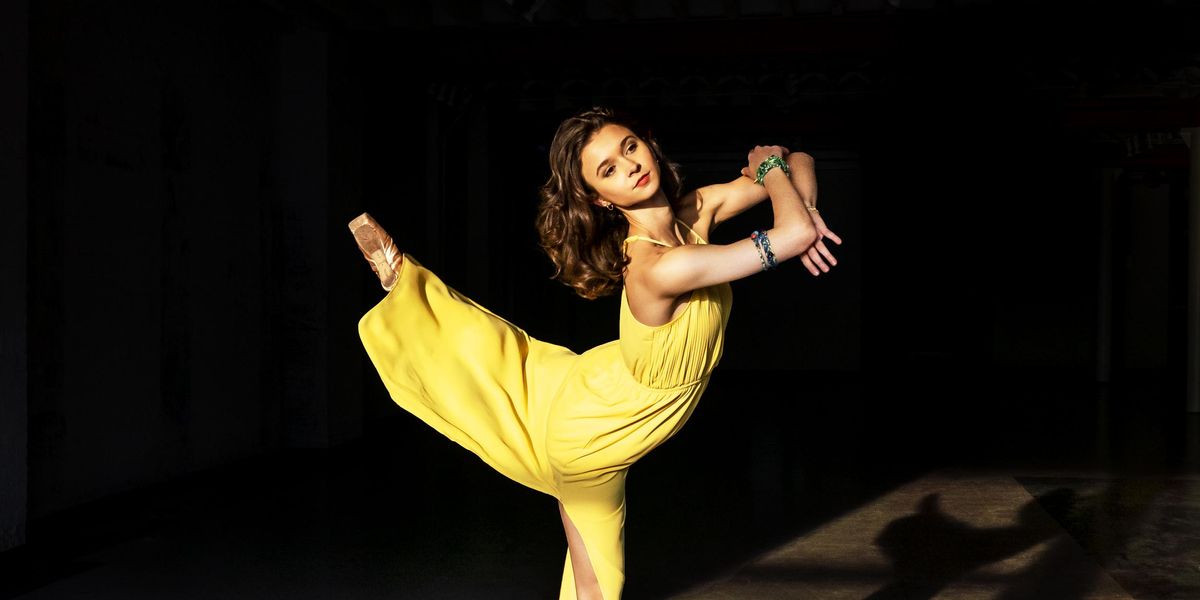Meet Camila Rodrigues, New York City’s Go-To Virtual-Class Demonstrator
By March of last year, Brazilian-born ballet dancer Camila Rodrigues’ career was finally taking off. After patiently waiting several years to obtain an O-1 visa, she was approved to work in the United States in August 2019 and was immediately hired by several New York–based companies, including Kathryn Posin Dance Company, Neglia Ballet and Movement Headquarters Ballet Company (where I am artistic director). Only seven months later, that momentum screeched to a halt when the coronavirus pandemic caused the performing arts to indefinitely shut down. But Rodrigues leaned into the same indefatigability it took to kickstart her career and found a unique way to keep herself in top shape for the future.
For many New York City dancers like Rodrigues, who don’t have access to regular company class, it’s common to maintain their conditioning in the city’s vast open-class network. But “at the beginning of our lockdown, there were no virtual classes,” she says. “I would clear out the living room and give myself exercises to stay in shape.” Two months after Steps on Broadway closed, teacher Nancy Bielski started offering classes on Zoom from her home for Steps’ virtual program. “But with the city shut down, I had no income to pay for class,” Rodrigues says.
Having been a regular in Bielski’s class for several years, Rodrigues entrusted her as a mentor. “I texted Nancy, letting her know I wanted to be in class but couldn’t afford it. My intention wasn’t to ask for a free pass. Instead, I told her out of respect for our history.”
At the time, Bielski already had Christine Shevchenko from American Ballet Theatre demonstrating on Zoom for her. But her schedule often had conflicts, which opened up an opportunity for Rodrigues. “Soon after reaching out to Nancy, she asked me to demonstrate from my home.” Rodrigues would receive free classes in exchange for her time as a demonstrator, which helped resolve her accessibility issues. “Nancy has an international following that takes her classes regularly. So, I was very grateful for the opportunity and that she trusted I could represent her class well.”
After several classes, Rodrigues was taken on as Bielski’s go-to dancer. “Camila is a beautiful dancer,” says Bielski, whose classes feature live music by accompanist Steven Mitchell. “She knows my class well and loves to dance and perform. Her ego is strong enough to accept and almost devour corrections. She is a joy to teach, and all that joy shows as she demonstrates my exercises.”
Within a few weeks, Rodrigues received additional requests to demonstrate for Espen Giljane (also at Steps) and Kate Loh DeMarco at Ballet Arts. Her schedule quickly expanded to performing exercises for virtual classes seven times a week. “Since quarantine started, I have never felt out of shape because of these classes,” she says.
Pre-COVID, it was more common for educators outside of ballet to have an assistant to show their warm-ups or as a visual reference for choreography. This all changed with the introduction of Zoom; with virtual delays and new dancers enjoying previously unheard-of access to classes, many ballet teachers have taken on assistants. “Zoom has limitations,” says Loh DeMarco. “But the right assistant will support the spirit and tone of the class. Camila’s demonstrations help guide students, but also inspires them.”
While working as a demonstrator is typically unpaid, there are several benefits. Aside from accountability to stay in shape, Rodrigues gets free classes. And while most New York City dance facilities have remained closed, demonstrators like Rodrigues sometimes work with teachers from inside a dance studio. (Bielski continues to teach from home, while Giljane teaches from the studio and Loh DeMarco does a mix.) “After Espen’s classes, we spend several minutes executing grand allégro and fouetté turns, which is something I can’t do at home,” says Rodrigues. Beyond these perks, Bielski’s class also has company directors, artistic staff and répétiteurs who join in when they can. “Having these artists watching me demonstrate offers a great opportunity to be seen and inspires me to keep pushing forward.”
Rodrigues admits that demonstrating can cut into her own class experience. While other dancers wear warm-ups or alter combinations to fit their needs, she believes she needs to look presentable while replicating class material verbatim. She also chooses to not sit out any combination. But she also sees the flip side of the coin. “Demonstrating has helped me overcome the loss of my performing season over the past year. I feel like every class is a performance. I have to prepare myself to be seen by an audience. I think about everything from my hair to the color of my leotard. I warm myself up with yoga exercises before class starts and make sure I look presentable, so students can clearly see my line on their screens.”
When asked about her exhausting schedule, which has included virtual and outdoor performance projects, Rodrigues again points to the structure demonstrating provides. “It forces me to get up earlier and doesn’t let me get lazy,” she says. “It also ensures I get out of my house several days each week and has helped me mentally, knowing that people are counting on me. And while I am a professional, I will also always be a student. But now I get to lead.”





